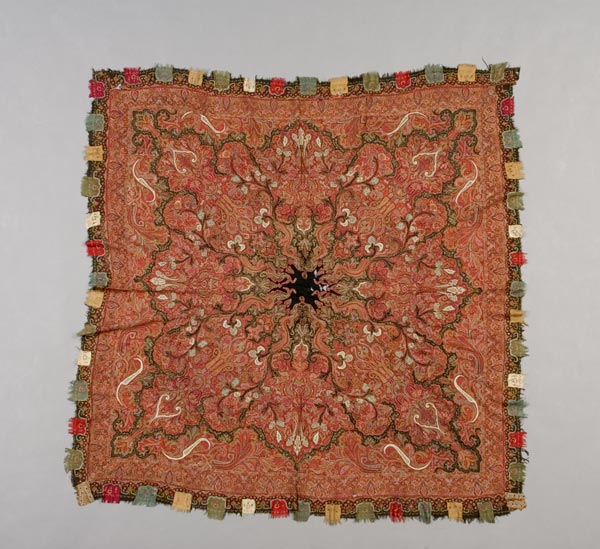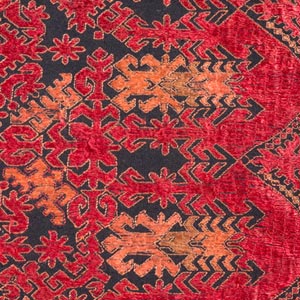Crimson Shawl
The Show

Crimson shawl Probably Kashmir, ca. 1870 Woven and pieced wool with embroidery University of Michigan Museum of Anthropological Archaeology, 17369
Large shawls like this one were worn on the body, strategically draped to show the fine artistry of the design and craftsmanship of the construction. This square shawl in particular was made from many small pieces of woven cloth masterfully stitched together in the so-called patchwork technique. It exhibits at least a dozen colors of dyed wool woven from the down of the Cashmere goat, a fine fiber still coveted today. While popular in Kashmir during the late 19th century, such luxurious shawls also became highly fashionable garments in Europe, where they sparked a new shawl-weaving industry that was aided significantly by the advent of the automatized Jacquard loom.
Bibliography: Shawl's online catalogue entry; Beardsley and Sinopoli 2005, 187–189 and 239; Ames 1997; Irwin 1973; and Lévi-Strauss and Listri 1987.
Return to the Show
